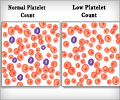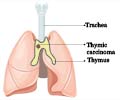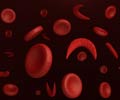A research has discovered a new and powerful molecular switch that may lead to the discovery of a treatment for lupus.
A research has discovered a new and powerful molecular switch that manages the inflammatory response of the immune system, and may also lead to the discovery of a treatment for lupus.
The findings may be used to develop methods to shut down uncontrolled inflammation, restore immune system regulation, and treat chronic autoimmune disorders such as lupus.The research was led by Greg Lemke, PhD, professor of Molecular Neurobiology at the Salk Institute and he was funded by the Lupus Research Institute (LRI).
By autoimmunity, it is meant that the immune system which is designed to repel outside invaders by mistake builds up an incontrollable destructive inflammatory attack against the body’s own tissues and organs.
“We have found an essential switch that controls immune inflammation,’ said Dr Lemke.
In this study, Dr. Lemke mounts on findings that he and his team previously reported, when he noticed that mice genetically engineered to be born without a tiny family of three receptors—TAM receptor tyrosine kinases—developed an autoimmune illness similar to lupus in humans.
Dr. Lemke illustrated how under normal circumstances, these “TAM” receptors, are pivotal in stopping the immune system from building up an incontrollable inflammatory response against invading viruses and bacteria.
Advertisement
However, in people with lupus and certain other autoimmune illnesses, the TAM signalling network may be seriously compromised.
Advertisement
Those who are affected by lupus tend to have low levels of a blood factor (proteins S) that TAM receptors require to carry out their job.
Administering modified versions of protein S, or its related TAM activator Gas6, to people with lupus may signify a way of stopping the immune system destruction of precious organs and tissues.
“This is definitely something we intend to investigate,” said Dr. Lemke.
This finding is reported in the recent issue of the journal Cell.
Source-ANI
SRM/P











